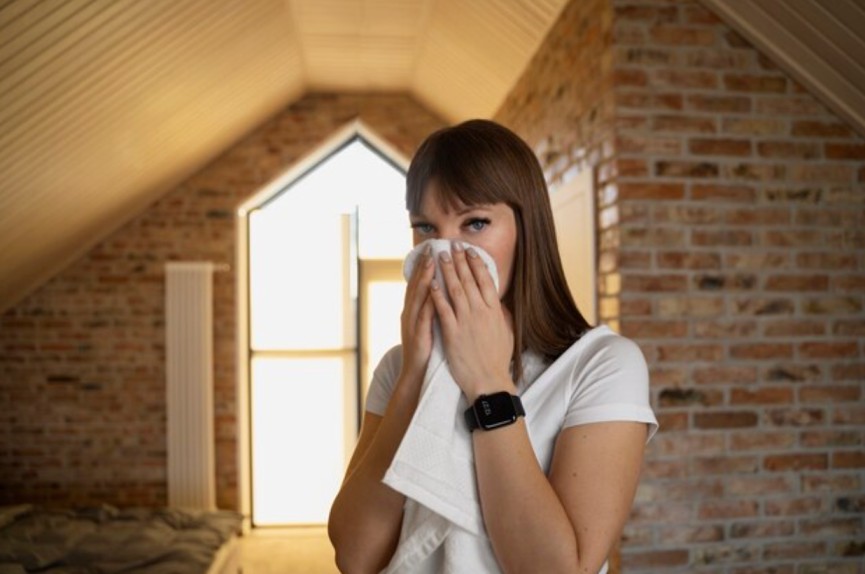Blog
What Does Formaldehyde Smell Like?
Formaldehyde is a chemical compound found in various household products and building materials, but many people wonder, “What does formaldehyde smell like?” If you’ve ever encountered it, you’ll recognize its distinctive, strong, and somewhat unpleasant odor. It is often described as pungent, with a sharpness similar to the smell of pickles. This smell can be overpowering, especially in confined spaces. Understanding its scent is essential, as formaldehyde can have adverse health effects when exposure is prolonged.
In this article, we’ll explore what formaldehyde smells like, how to identify its presence, and what to do if you encounter it in your environment.
The Characteristics of Formaldehyde’s Smell
Formaldehyde smells sharp and chemical-like. For those familiar with it, the odor is often likened to that of pickled foods. Some describe it as “antiseptic” or “suffocating” due to its ability to cause irritation to the nose, throat, and eyes upon contact.
Many individuals exposed to formaldehyde for the first time may experience discomfort due to the intensity of its odor. Even at low concentrations, the smell is easily detectable, which serves as a warning of its presence. However, formaldehyde is used in low concentrations in various industries, so you may come across it more often than you think.

Where Can You Encounter the Smell of Formaldehyde?
The smell of formaldehyde can appear in many common settings. Knowing what formaldehyde smells like can help you identify potential sources and avoid overexposure.
Household Products
Manufacturers commonly use formaldehyde in household items such as cleaning products, furniture, and some personal care items. They also treat pressed wood products like plywood, particleboard, and fiberboard with formaldehyde-based resins.If these materials are new or exposed to heat, they may release the sharp odor into your home. Over time, the smell can fade, but new furniture often gives off this distinct scent when first introduced.
Construction and Building Materials
The smell of formaldehyde is often found in newly constructed buildings. This is because it is present in many building materials such as insulation, adhesives, and paints. It is also used in glues and finishes that coat surfaces in homes and offices. The concentration of formaldehyde is usually higher in newly built structures and can reduce over time, but early exposure can be intense.
Medical and Industrial Use
Formaldehyde is used in laboratories, hospitals, and industries for sterilization purposes. If you’ve ever visited a medical facility, you may have encountered the chemical smell in disinfectants or preservation fluids. Formaldehyde’s powerful odor also appears in embalming fluids, which are used to preserve biological specimens.
The Smell in Cigarette Smoke
Formaldehyde is one of the harmful chemicals released when cigarettes burn. Smokers and those exposed to second-hand smoke may unknowingly inhale formaldehyde, which contributes to the strong smell of cigarette smoke. For this reason, it is vital to ensure good ventilation in areas where smoking occurs to limit exposure to this chemical.
Why is Formaldehyde’s Smell Important?
Recognizing formaldehyde’s smell is crucial because of its potential impact on health. The scent signals exposure to the chemical, and at high concentrations, it can cause irritation and more severe health issues.
Short-Term Health Effects
Short-term exposure to formaldehyde can cause a burning sensation in the eyes, nose, and throat. Many people experience watery eyes, coughing, or a sore throat after being in contact with even small amounts of formaldehyde. Inhaling the vapors can also cause headaches and dizziness.
Long-Term Health Effects
Prolonged exposure to formaldehyde, especially in poorly ventilated spaces, can lead to more significant health concerns. Research links long-term formaldehyde exposure to certain types of cancer. Workers in industrial settings who handle formaldehyde should use protective equipment and ensure proper ventilation to minimize the risks of repeated exposure.
How to Reduce Formaldehyde Exposure
If you identify the smell of formaldehyde in your environment, it’s important to take steps to minimize your exposure. Here are some practical tips to reduce formaldehyde levels in your home or workplace:
Improve Ventilation
One of the simplest ways to reduce formaldehyde exposure is by increasing ventilation. Open windows and doors, use fans, and ensure air is circulating throughout the space. This can help disperse the chemical and reduce the intensity of its smell.
Choose Low-Formaldehyde Products
When shopping for furniture, building materials, or cleaning products, look for items labeled as “low-formaldehyde” or “formaldehyde-free.” Many manufacturers now offer safer alternatives to reduce health risks.
Use Air Purifiers
Air purifiers with carbon filters can effectively capture formaldehyde particles in the air, reducing both the smell and the chemical concentration in indoor spaces.
Monitor Formaldehyde Levels
If you’re concerned about formaldehyde levels, consider using an indoor air quality monitor. These devices can detect formaldehyde and other volatile organic compounds (VOCs) in your environment, alerting you to high concentrations that may require action.
What to Do If You Smell Formaldehyde?
If you detect the smell of formaldehyde, it’s important not to ignore it. Since it can pose risks to your health, taking immediate steps to ventilate the space, limit your exposure, and seek professional help if needed is essential.
Seek Professional Assessment
If you are unsure about formaldehyde levels in your environment, consider contacting an expert. Professionals can test the air quality in your home or office and offer solutions to reduce chemical exposure. Don’t take chances with your health—book a free consultation session with Our Expert to get advice on detecting and managing formaldehyde in your environment.
